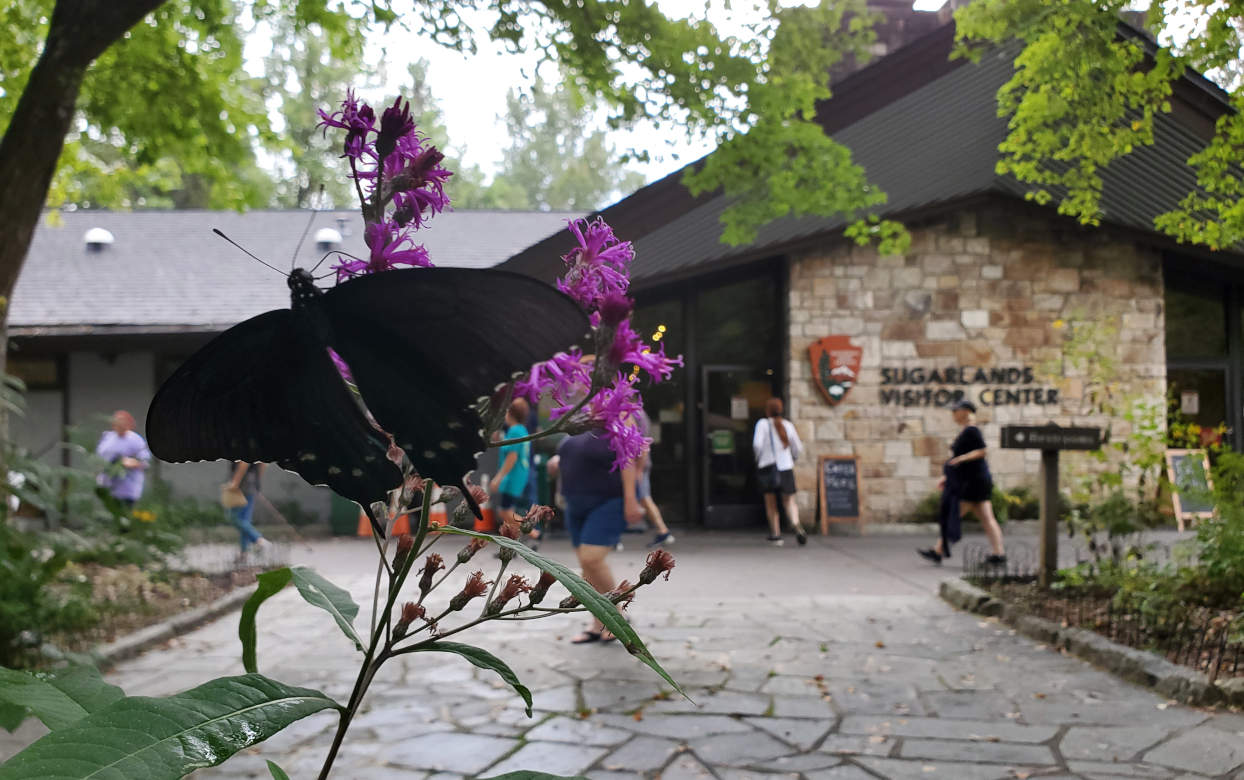
Pollinator Garden
at Sugarlands Visitor Center
The pollinator garden on the plaza in front of Sugarlands Visitor Center is full of plants that are native to Great Smoky Mountains National Park, which attract all sorts of wildlife. DLiA works with park management and volunteers to maintain this beautiful and functional garden, which contains more than 70 different plant species across 10 beds. Here, you’ll learn about the garden and the wildlife it attracts.
Jump to: What are native plants? | Common plants | Common pollinators | Garden map | Resources
What are native plants and why are they important?

Native plants have adapted to the local climate and ecosystem of a particular place. Native plants are well-connected with other species in their ecosystem and often play valuable roles.
Photo by Josiah Kilburn.
Some provide nectar for native bees, wasps, flies, hummingbirds, and other wildlife. Ironweed is a great source of nector for monarch butterflies as they migrate south in the fall.
Photo by Julie Elfin.


Others serve as hostplants for caterpillars and other herbivorous insects and wildlife. Common milkweed is one of just a few plant species that monarch caterpillars can develop on.
Some provide nuts, fruits, and berries which serve as a food source for wildlife. The fruit of this hearts-a-bustin’ plant provides food for songbirds, turkey and small mammals.


Some provide habitat and nesting material for birds, bees, and more. A leafcutter bee (Megachile sp.) has cut away an oblong section of this eastern redbud leaf to line its nest cells.
They can even become feeding grounds for predatory insects and spiders. Here, a jagged ambush bug (Phymata sp.) blends into goldenrod flowers, waiting to catch an unsuspecting pollinator.

Common native plants in the garden

Indian pink
Spigelia marilandica
Photo by Chloe Pryor.
Black-eyed Susan
Rudbeckia hirta


Purple passionflower
Passiflora incarnata
Photo by Chloe Pryor.
Butterfly milkweed
Asclepias tuberosa
Photo by Chloe Pryor.


Carolina sweet shrub
Calycanthus floridus
Wild geranium
Geranium maculatum
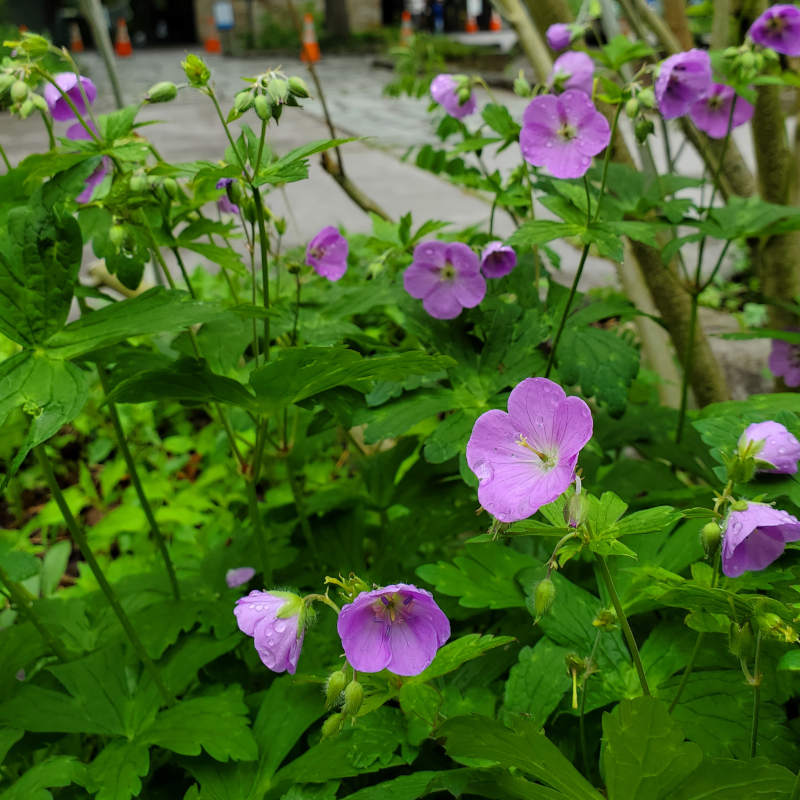

Blue star
Amsonia tabernaemontona
Golden ragwort
Packera aurea

Common pollinators

Ruby-throated hummingbird
Archilochus colubris
On common jewelweed
Impatiens capensis
Photo by Faye Sykes.
Silver-spotted skipper
Epargyreus clarus
On beebalm
Monarda sp.


Pipevine swallowtail
Battus philenor
On wingstem
Verbesina alternifolia
Great spangled fritillary
Argynnis cybele
On butterfly milkweed
Asclepias tuberosa
Photo by Chloe Pryor.
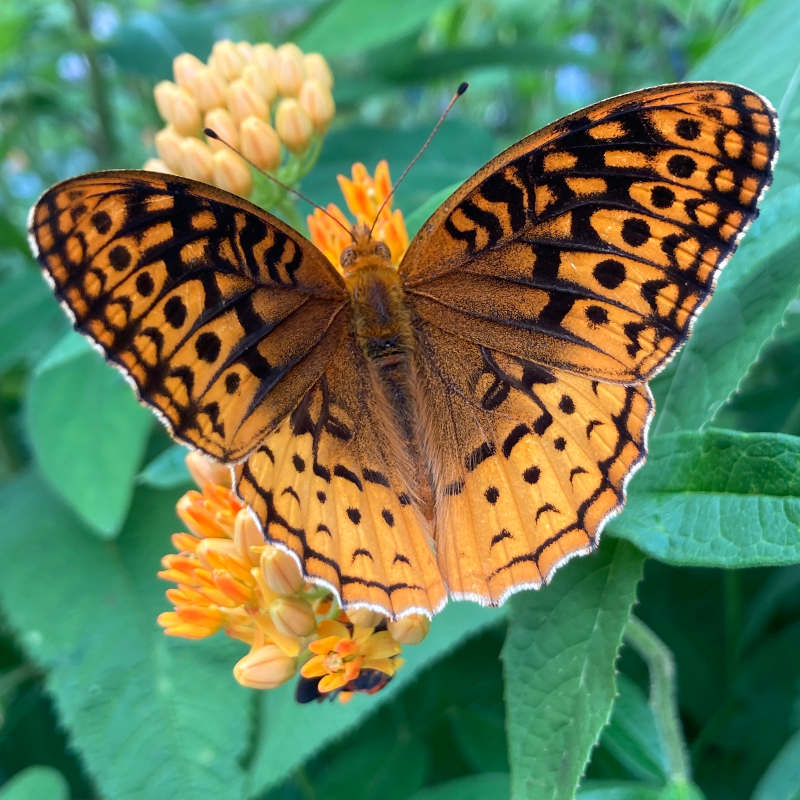

Hummingbird moth
Hemaris sp.
Photo by Faye Sykes.
Common buckeye butterfly
Junonia coenia
And small bee (Andrena sp?)
Black-eyed Susan
Rudbeckia hirta
Photo by Faye Sykes.


Summer azure
Celastrina neglecta
On New Jersey tea
Ceanothus americanus
Photo by Luca Pfeiffer.
Painted lady butterfly
Vanessa cardui
On aster
Aster sp.
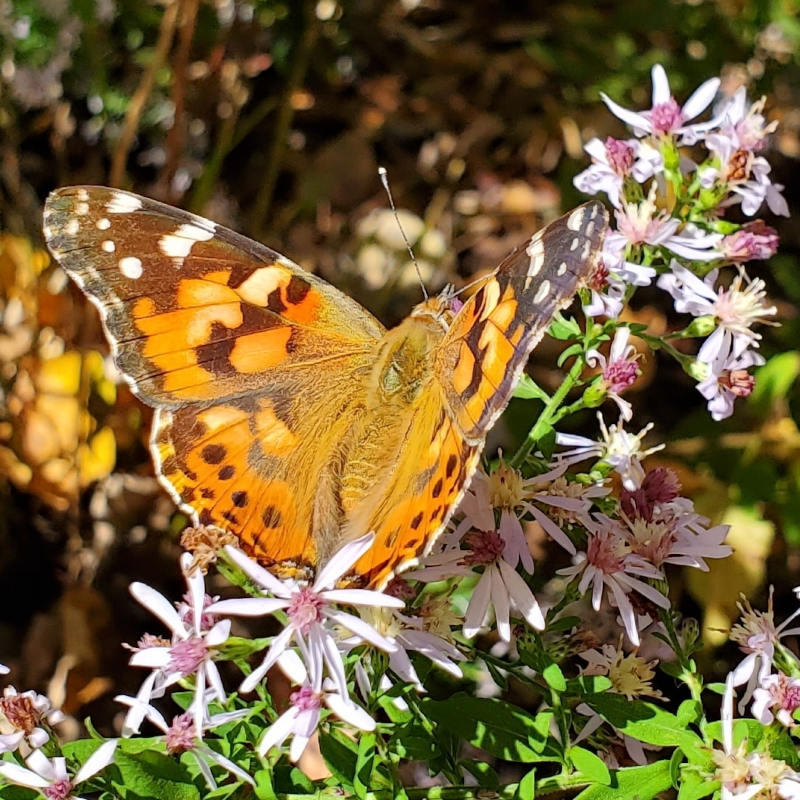

Red spotted purple
Limenitis arthemis astyanax
On American hog-peanut
Amphicarpaea bracteata
Photo by Luca Pfeiffer.
Pearl crescent
Phyciodes tharos
On common milkweed
Asclepias syriaca
Photo by Chloe Pryor.


Eastern carpenter bee
Xylocopa virginica
On Virginia bluebells
Mertensia virginica
Sharptail bee
Coelioxys sp.
On wingstem
Verbesina alternifolia
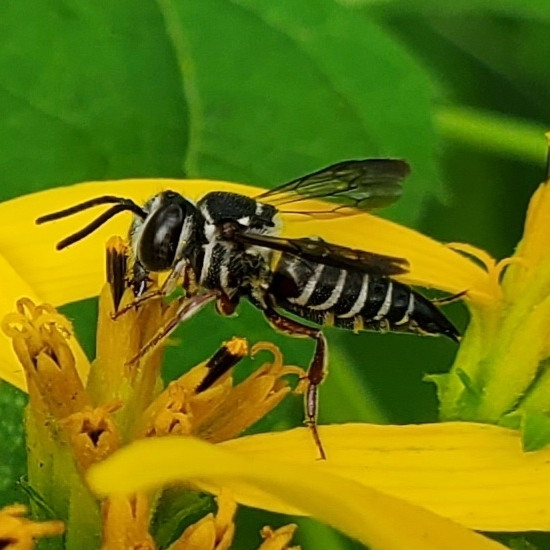

Eastern hornet fly
Spilomyia longicornis
On wingstem
Verbesina alternifolia
Black-horned smoothtail fly
Epistrophe grossulariae
On North American aster
Symphyotrichum sp.
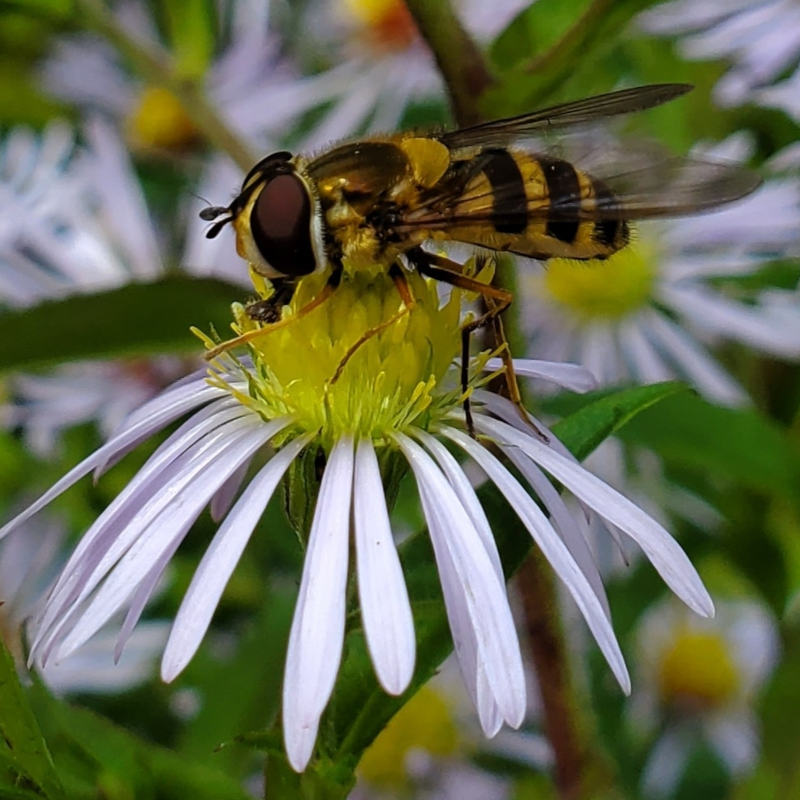

Scudder’s bush katydid nymph
Scudderia sp.
On New Jersey tea
Ceanothus americanus
Photo by Faye Sykes.
Bee-like flower scarab
Trichiotinus sp.
On New Jersey tea
Ceanothus americanus
Photo by Luca Pfeiffer.


Large milkweed bug
Oncopeltus fasciatus
On common milkweed
Asclepias syriaca
Map of the pollinator garden

Resources
Pollinator garden handouts
- List of plants and associated pollinators (PDF)
- List of plants by garden bed (PDF)
- Garden plot layout (PDF)
- Handout and quiz about the SVC Pollinator Garden (PDF)
- List of books, guides, websites and more for learning about local plants and pollinators (PDF)
Information about Smokies life
- Smokies Species Tally – breakdown of all of the 21,000+ species living in the Smokies
- Smokies Most Wanted – document life in the Smokies with the iNaturalist app
- iScience – DLiA’s middle school biodiversity program
Field guides
- Wildflowers of the Smokies Field Guide
- Butterflies & Moths of the Smokies Field Guide and Wall Poster
- Ferns of the Smokies Field Guide
Gardening with native plants
- Guide to starting a native plant garden from the Wild Ones Tennessee Valley Chapter
- Pollinator conservation resources from the Xerces Society
- Nature’s Best Hope by Doug Tallamy
- Lawns into Meadows by Owen Wormser
We’d like to give a special shoutout to Patricia and Bruce Mayhugh for cataloging and researching the plants in the Sugarlands Pollinator Garden. They compiled the resources above for their Blue Ridge Naturalist Certificate Program Final Project, which was entitled “Finding Smokies Most Wanted at Sugarlands Visitor Center Pollinator Garden, Great Smoky Mountains National Park.” Thanks Patricia and Bruce for your time and dedication to this project!
